A traditional Nalukettu home in Kerala restored by renowned architect Benny Kuriakose.
Benny Kuriakose is well-known for his efforts in conserving old buildings in South India. I am a big fan of his new constructions that pay respect to ancient building principles, yet allow for a modern lifestyle.
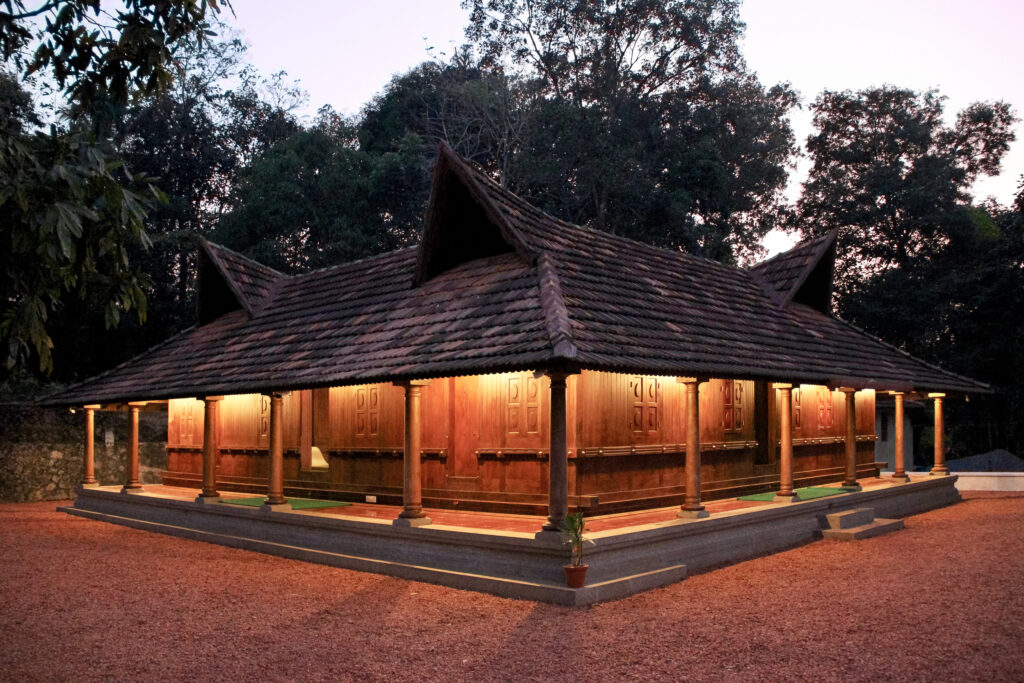
Take for instance Panicker House. It is a 100-year old traditional Kerala home, located on a sprawling 1.5 acre piece of land. Let’s delve into the story of this old home with the help of these excerpts from an interview with Dr Benny Kuriakose on the conservation of historic buildings (by Sinu Cherian) in Veedu Magazine, published in Malayalam.
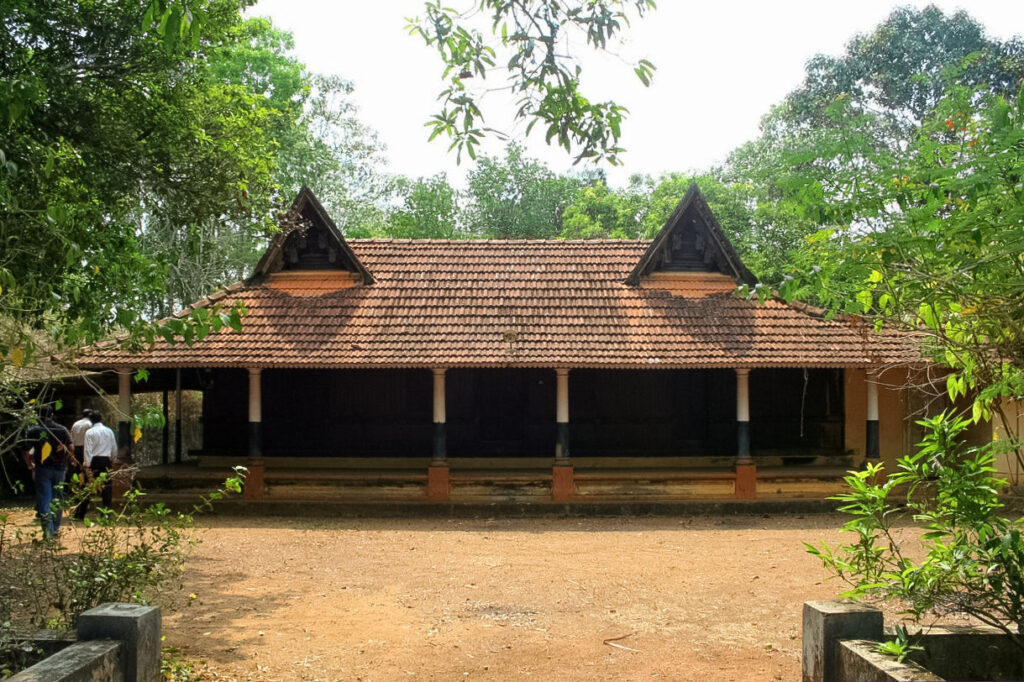
With its long verandahs, three chambers, a courtyard, basement and a chawadi, the Panicker house was closely associated with rituals and ceremonies of the nearby temple. The Nalukettu, (the name given to Kerala’s traditional houses built in this style) boasts of excellent wood-working skills and architectural uniqueness. Over time the house became empty and then dilapidated. However, it has been reclaimed through a clever material reuse. Once made of painted laterite stones, the 24 pillars encircling the verandahs and courtyard are now redone in teak wood – its rings and knots clearly visible.
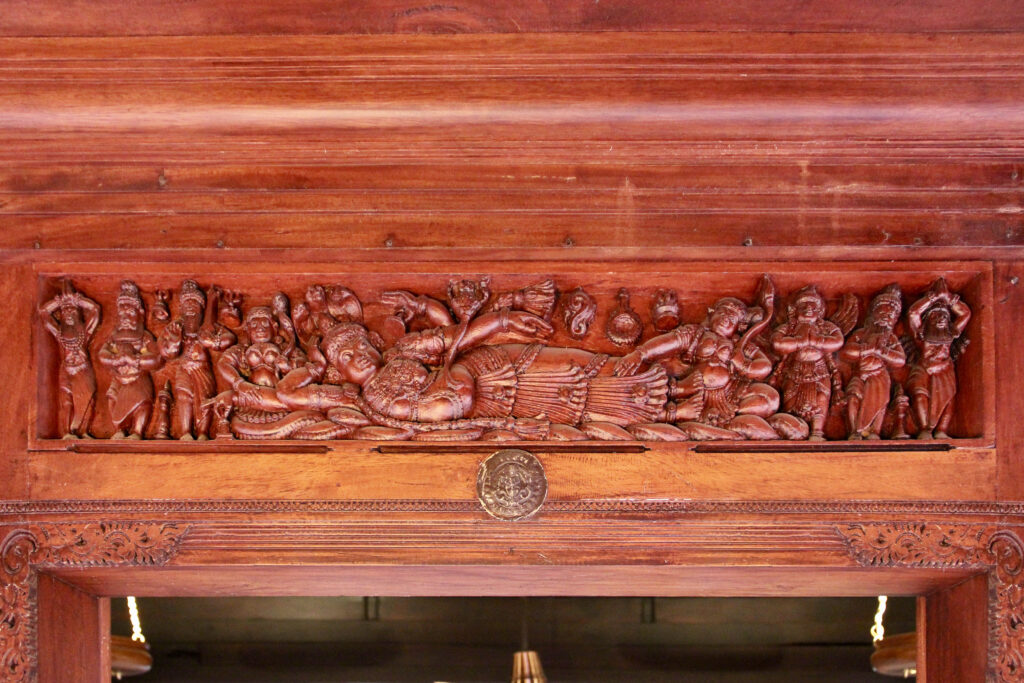
The exquisite carvings were restored to their former splendour. The excellence of the carvings is also evident on the door panels and facades. The delicate Ananthashayanam (the sleeping pose of Lord Vishnu) carving at the main entrance and the Gajalakshmi range at the threshold to the Pathayapura are notable.
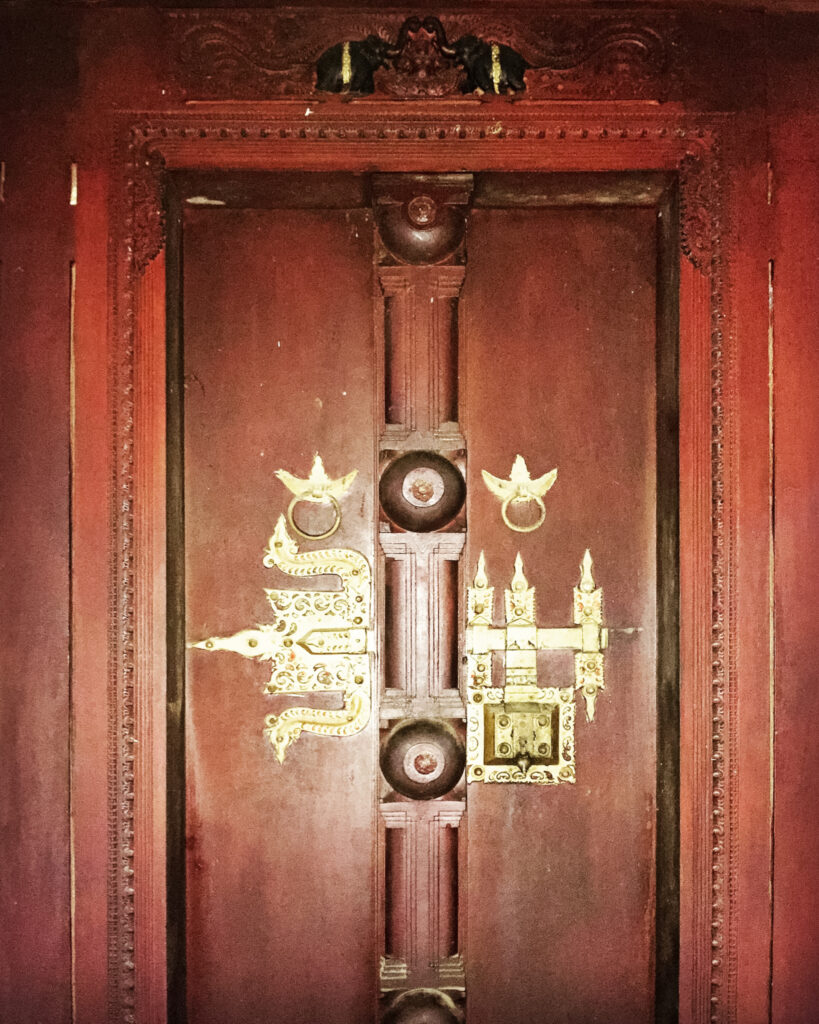
Reminiscing about the days of his boyhood and youth spent here, M K Panicker said that this 100-year old Nalukettu, once used to be full of people and noise. The long porch, the three chambers, the courtyard, the cellar, the ‘patthayam’ and the ‘chavadi’ were all symbols of grandeur. With the residents gone, the house staarted deteriorating. Over time, the posts and pillars rotted and were infested with termites, the wooden walls crumbled. Mr. Panicker, the current owner of the property decided to restore this structure.
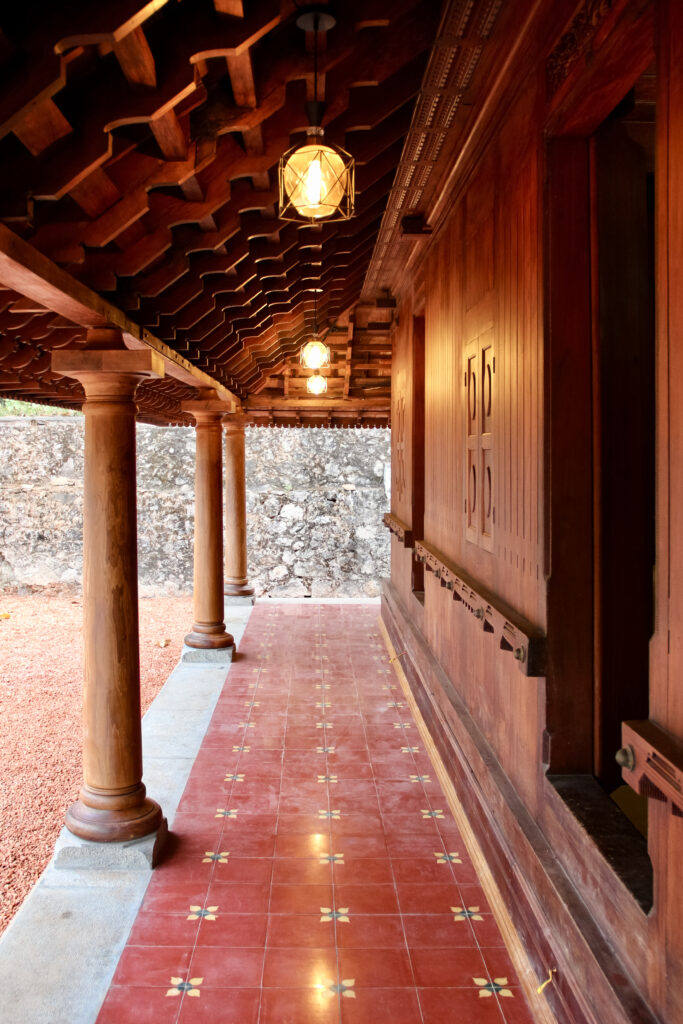
The long veranda facing the porch and parallel to the right side of the house was replaced by a new verandah running around the four sides. The old floor was demolished and replaced with Athangudi tiles brought from Tamilnadu.

Old and new
The ‘Ara’, the ‘Nilavara’ and the ‘Pathayam’ were all old in appearance, but contained light systems which were tedious in the darkness. The old flooring in the hallway and ‘Nilavara’ was replaced with tiles. It’s just that ‘Chavadi’ and ‘Pathayapura’ have been cleaned up without significant renovations.
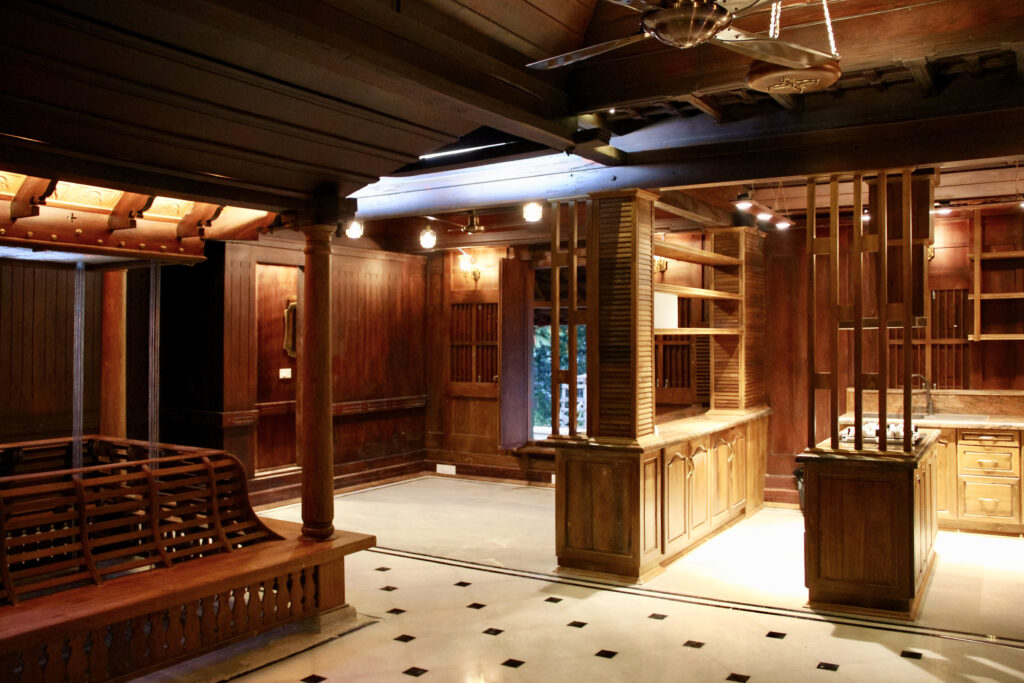
The bed in the room is the same as the old one. The bathroom and kitchen of the old house were both outhouses. In the new design, both were incorprated within the main house. . Half of the central area, including the kitchen, is floored with vitrified tiles that have a rough finish similar to that of granite. On the other hand, the area around the courtyard and the area adjacent to the chambers is floored with Vietnam marble. The countertops are made of granite that matches the color of the timber.
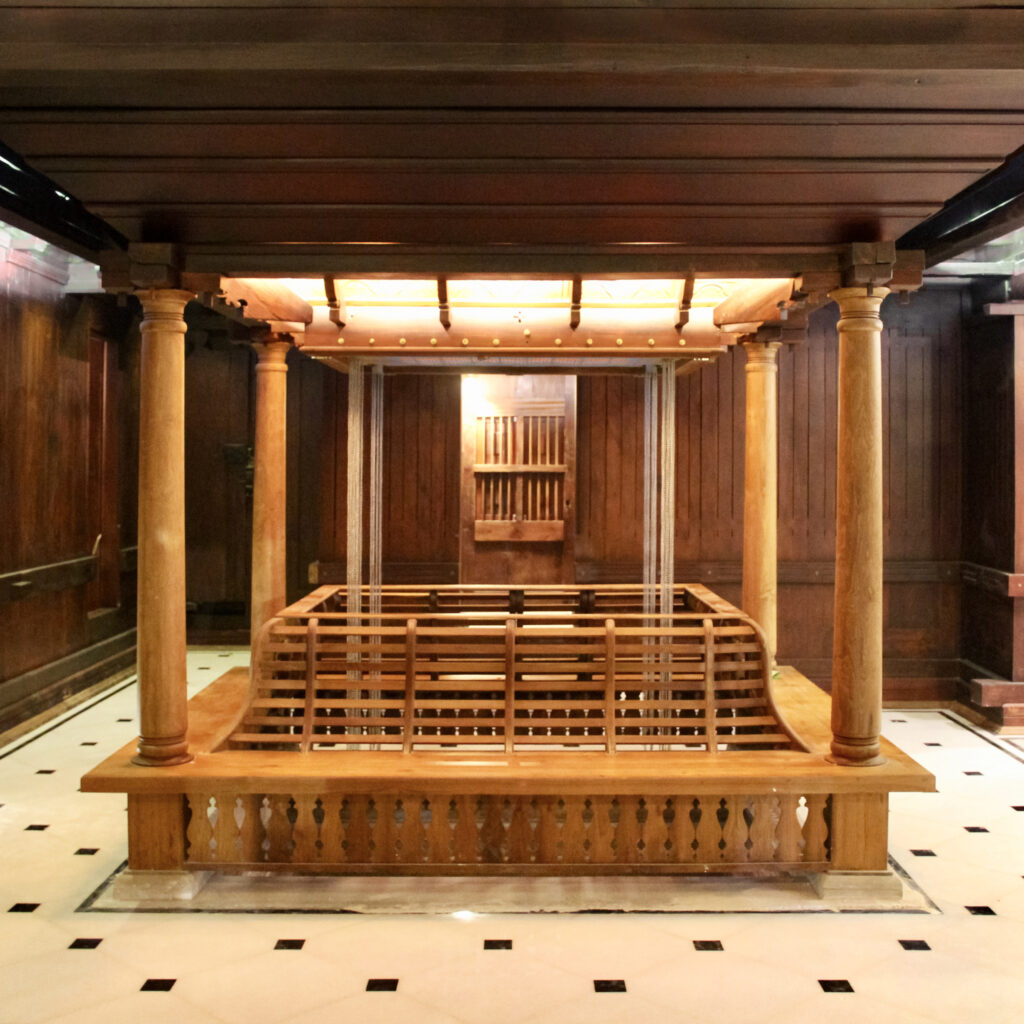
The new courtyard was designed without major changes from the old patio model. Pillars and a reclining seat are also included. If necessary, there is a facility to open the chair and get down to the floor. The roof of the courtyard is an openable steel net. There is also a system to store the rainwater that flows through the rain chain.

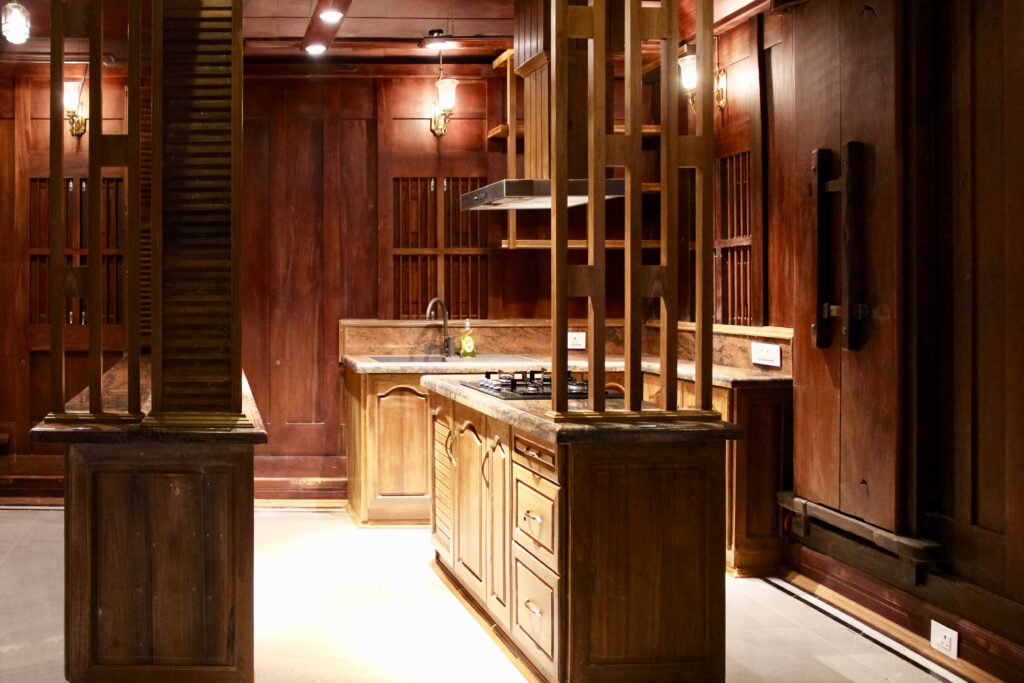
The sculptural beauty of the mold and timber is mind-blowing. The walls of the wash area and toilets are also covered with durable timber. The jambs and bottoms of the doors are all made of timber. Ruined roof is repaired by placing new rafters, purlins etc. The design and the details of the roof in the middle remained the same as the old design in the new one. Apart from teak wood, ‘Anjili’ and ‘Plavu’ wood were also used for carpentry. The skill of the carpenters led by Moothassari Radhakrishnan is worth mentioning in all the carvings.
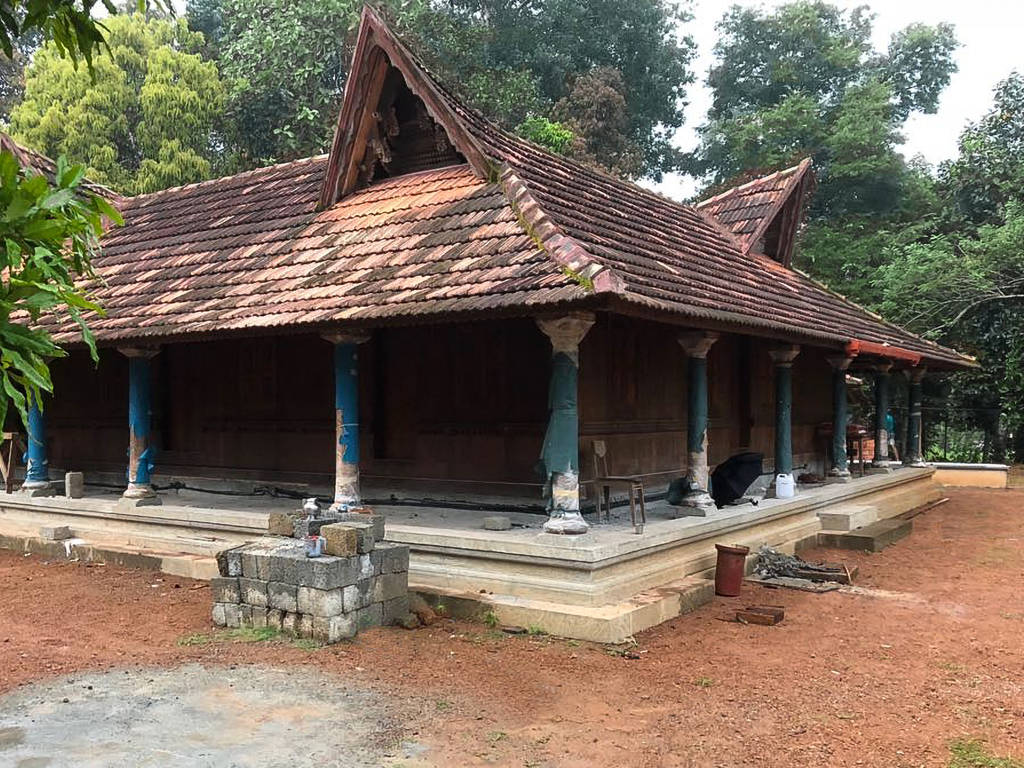
Here are a series of Before and After Photographs
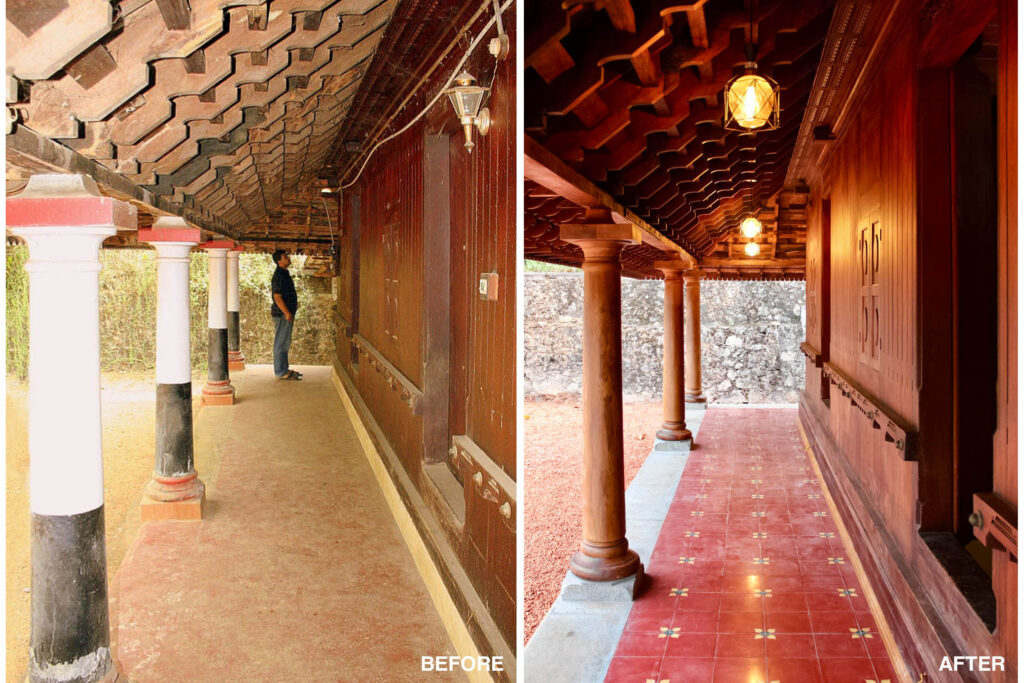

What is actually noteworthy here is the revival of a structure that time would have erased. Benny Kuriakose, the architect who reclaimed this Nalukettu with maximum reuse, and the homeowner who took the big decision to preserve the past by spending a lot of money and effort. Kanipayyur Krishnan Namboothiripad’s work, closely following guidelines laid down by the architect, also deserves appreciation

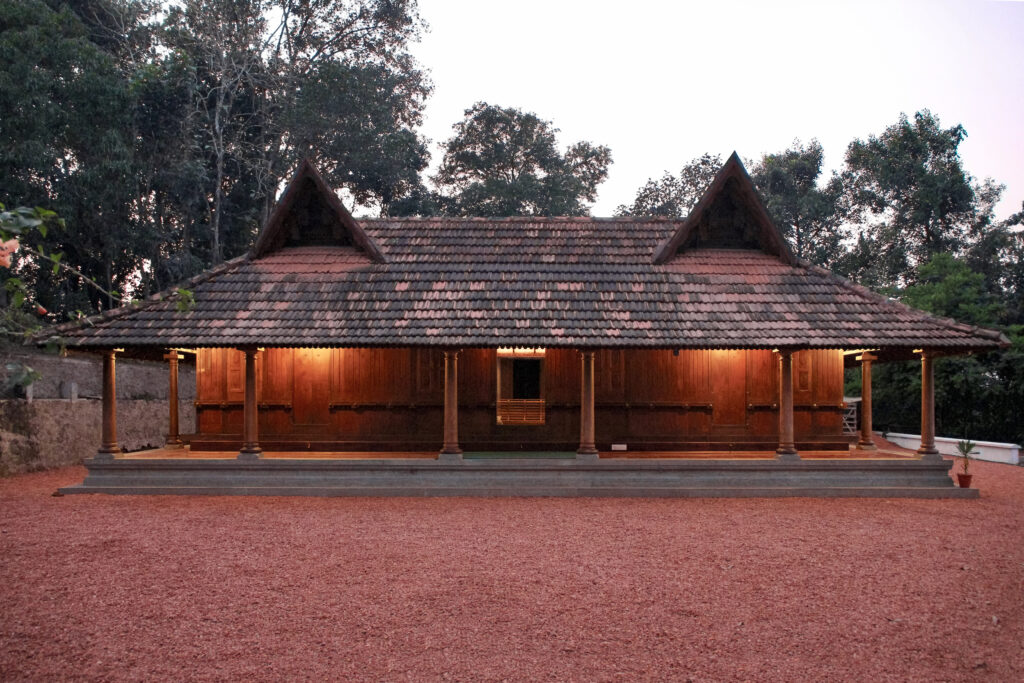
A new way to live in an old home
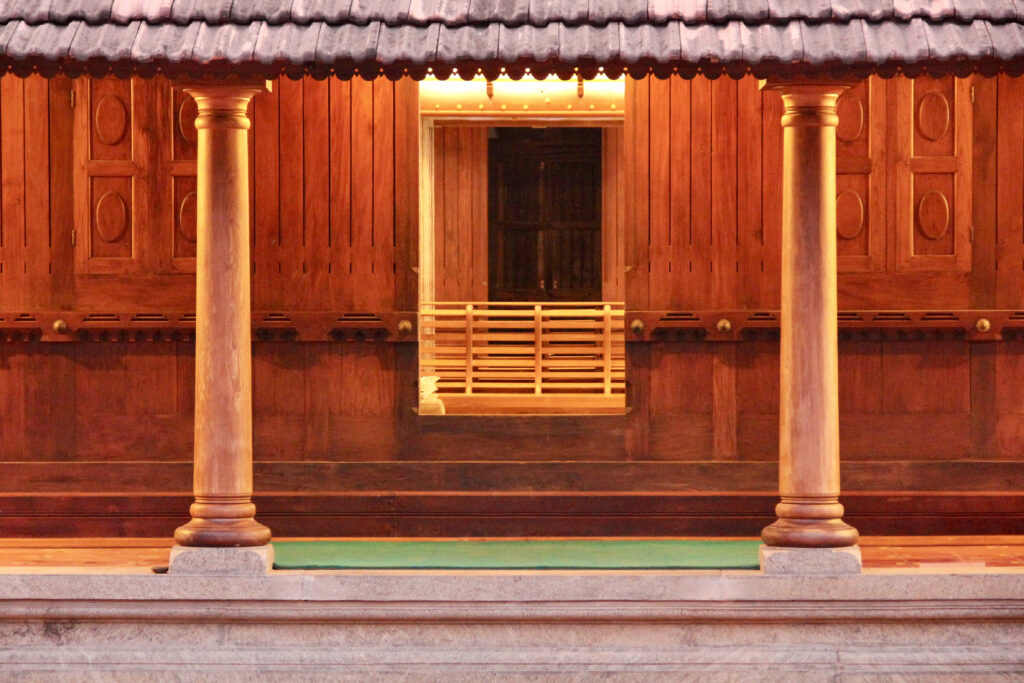

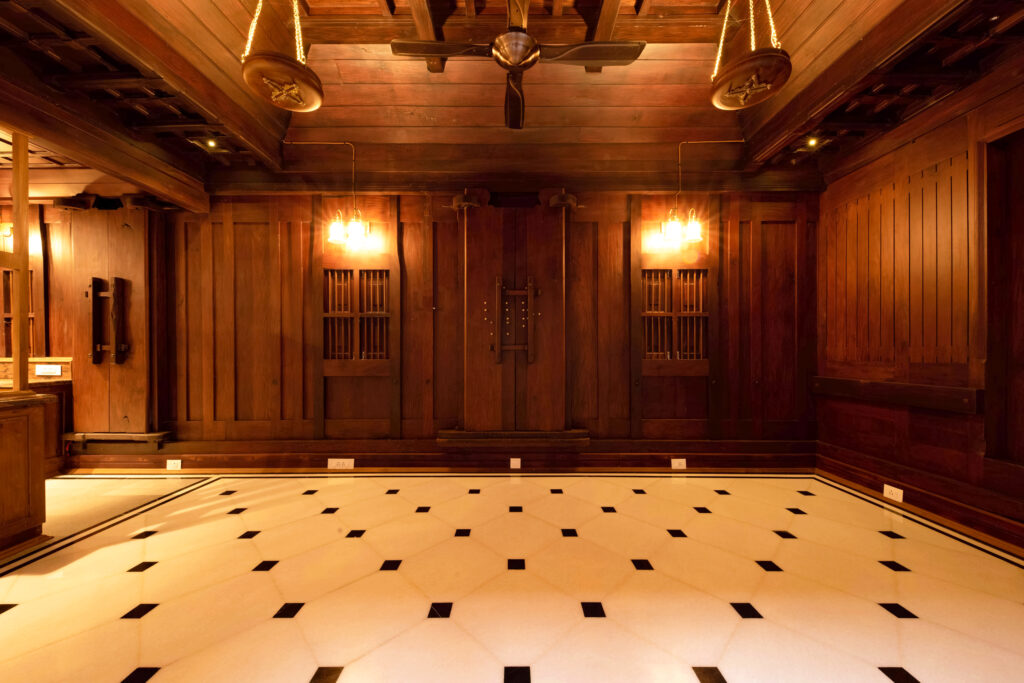
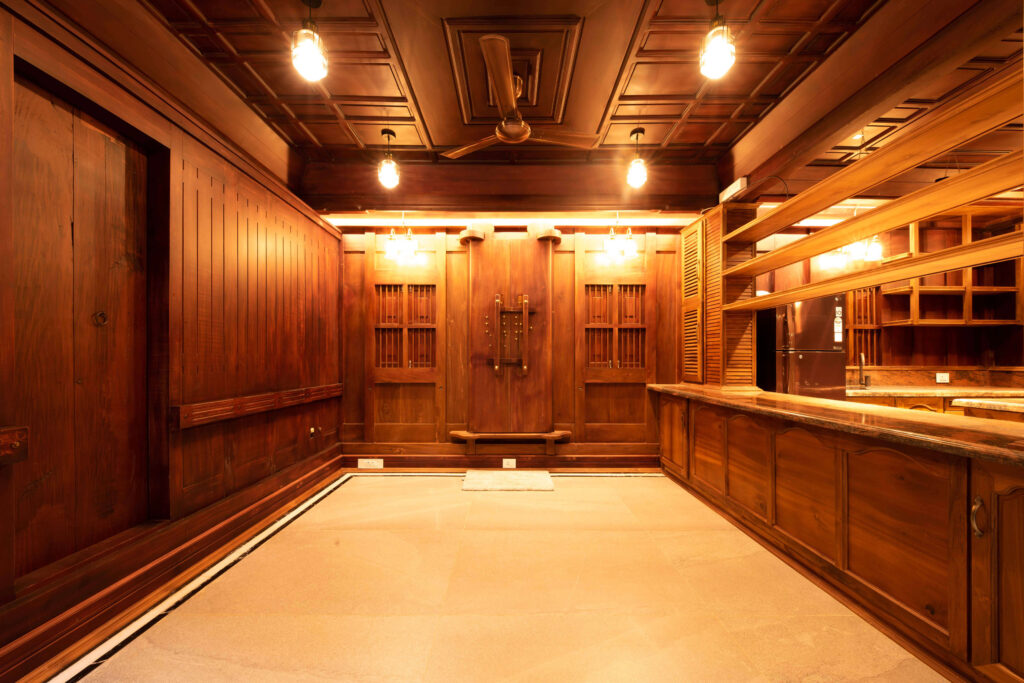
Like poetry written by the hand of time, some constructions stand out for their uniqueness. And this beautiful Nalukettu is an ode to the architecture of yore!
You can follow Mr. Benny Kuriakose and his work on his website – www.bennykuriakose.com
The beautiful images here are pinned on Pinterest, so head to our board and pin away!
More golden oldies
If you loved this little feature, and want to see more old houses featured on this blog, may we recommend our favourites?




